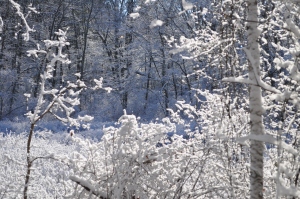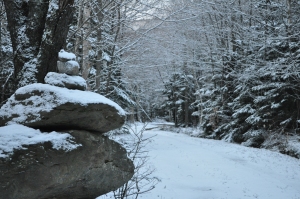Although I recently retired from the practice of law, climate change and environmental issues, civil rights, women’s issues, and inclusivity continue to inform my writing and work as a book artist.
In the past decade I have written several articles and essays on climate change have made a number of large and small art works exploring man-made climate change and their impacts on our oceans, earth, weather and atmosphere, plants and animals, people, and the future of our world. I thought I was done with what I had to contribute to the conversation on this topic, but in January I received a call for submissions from Unbound Visual Arts, in Allston, MA. Their gallery is located across the street from a progressive elementary school, and I have been puzzling about ways to make climate change more palpable and personal to people whose lives tend to be focused on other things. I decided to create a piece that can be used by teachers, children, and adults to individually or as a group to vividly imagine the real-life consequences of climate change on themselves, their classmates, and others like and unlike them across the world.
Bartering the World is an assemblage created from things I recovered after severe weather events, including inland floods, wild fires, beach storms, droughts, other climate changes between 2021 and 2023 which were likely caused or amplified by intentional human activities. Rather than house it in a conventional frame, I decided to make an archeological box as if a future child or parent were coming upon items from our present / their past. Along with the piece, I included questions to prompt conversation, group or individual class assignments, and to help bring home the different ways in which climate change affects all of use.
Below the photograph of the piece, is a portion of the question/ prompt sheet.

Specific items chosen for this piece include:
- Eleven items found in everyday children and teenagers’ home and school lives which are no longer in their owners’ homes. How many can you name?
- Nine things belonging to live beings affected by climate change. (These are all found items; no living thing was hurt by the making of this piece.) How many can you find?
- Three items that are part of industries that contribute significantly to climate change. How many can you name? Can you name others?
- At least seven items that have important symbolic value to humans and/or humankind. How many can you identify?
I have attached a link to the answer sheet, so that you can see how many you have identified. Hint: some of them are used in more than one category/ question. UVA 2023 Bartering the World Answer Sheet Only
Of course, the first thing a student asked me was, “Why Is It Called Bartering the World?” The reason is, that often we don’t realize that our everyday actions have an effect on the climate, and that we are unconsciously “bartering our world away” whenever we use fossil fuel energy we don’t need to use, waste water, throw items on the ground that could harm wildlife, etc. Similarly, we can all stop bartering our world away (or reduce our bartering) by making simple changes in our everyday lives.
The closing reception for the Climate Equity Show show at Arthaus, the Unbound Visual Art Gallery, ended yesterday, so I an now able to lend it to others who are interested in viewing or using it and the accompanying materials.
If you would like to borrow the actual Bartering the World assemblage, photographs of the assemblage, and/or the question and answer sheet, or you would like me to come and “teach” a storytelling class that includes a little information about how I made the piece and a group story telling exercise about a possible family that could have left behind the objects in the assemblage, please contact me via this website, and we can figure out what works for both of us.


